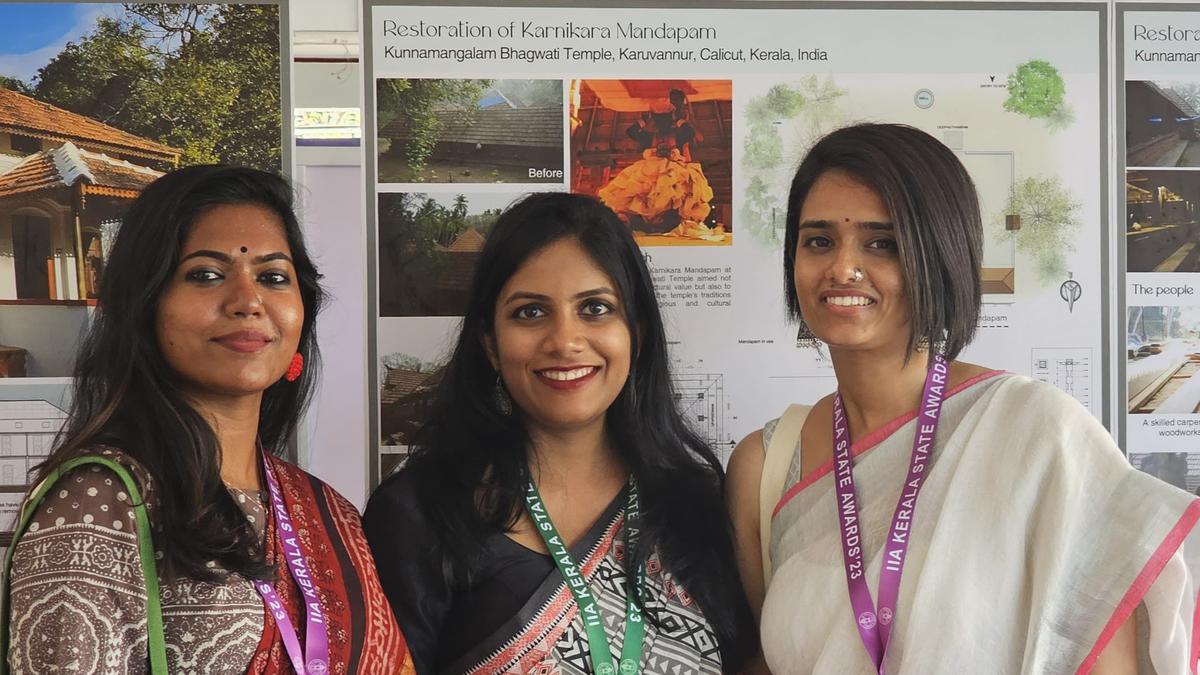
Conservation architects Swathy Subramanian, Savita Rajan and Ritu Sara Thomas could not believe their ears when they were requested to restore a centuries-old dilapidated structure within two months for an annual ritual. They visited the heritage Kunnamangalam Bhagawati Temple in Naduvannur, 29 kilometres from Kozhikode in January 2023. They had to restore a mandapam in front of the sanctum sanctorum by March 10.
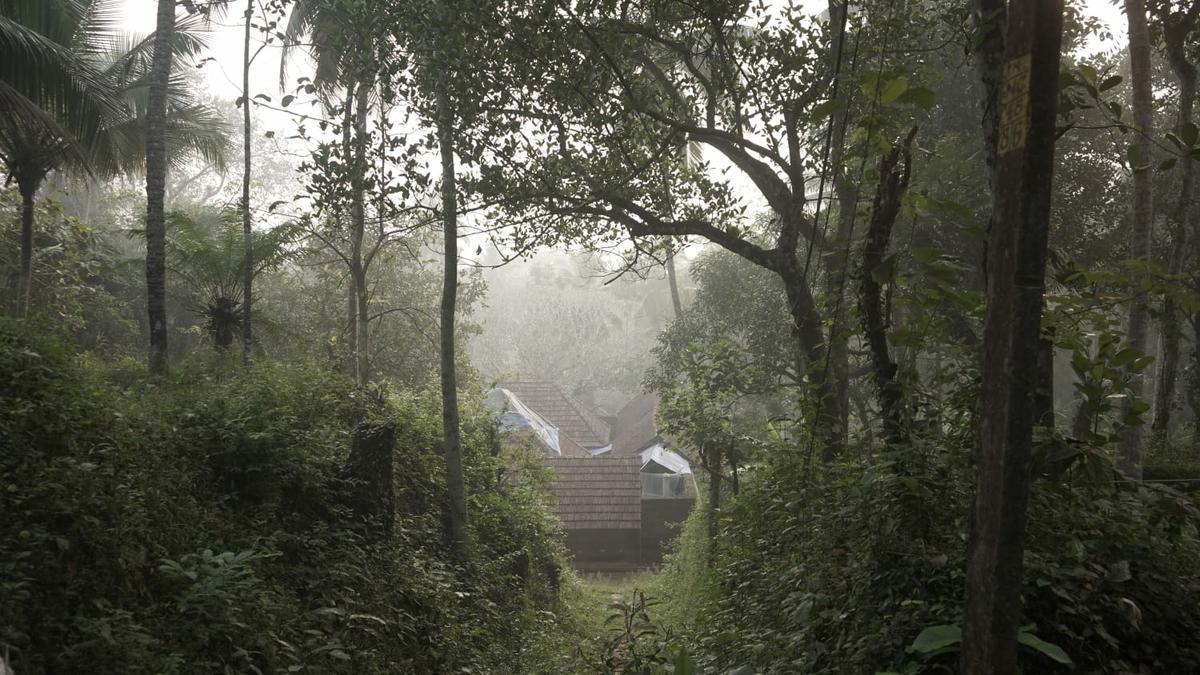
View of the Kunnamangalam Bhagawati Temple in Naduvannur, 29 kilometres from Kozhikode.
| Photo Credit:
SPECIAL ARRANGEMENT
A year later, they are basking in the accolades coming their way for successfully restoring the heritage mandapam.
In December 2023, the women-led project won the UNESCO Asia-Pacific Award for Cultural Heritage Conservation for their work on the Karnikara mandapam at the temple. They also won the Gold Leaf Award, instituted by the Indian Institute of Architects. Three of them, alumnae of the School of Planning and Architecture, formed Ezha in 2017. It focuses on conservation architecture, documentation and restoration of heritage structures.
Their first project for a national competition aimed at conserving and reviving a factory building of Comtrust in Kozikode. They were short-listed as one of the top nine entries from 120 submissions. That award caught the attention of Sruthin Lal, executive director of the Archival and Research Project (ARPO), who contacted them to restore the 300-year-old mandapam.
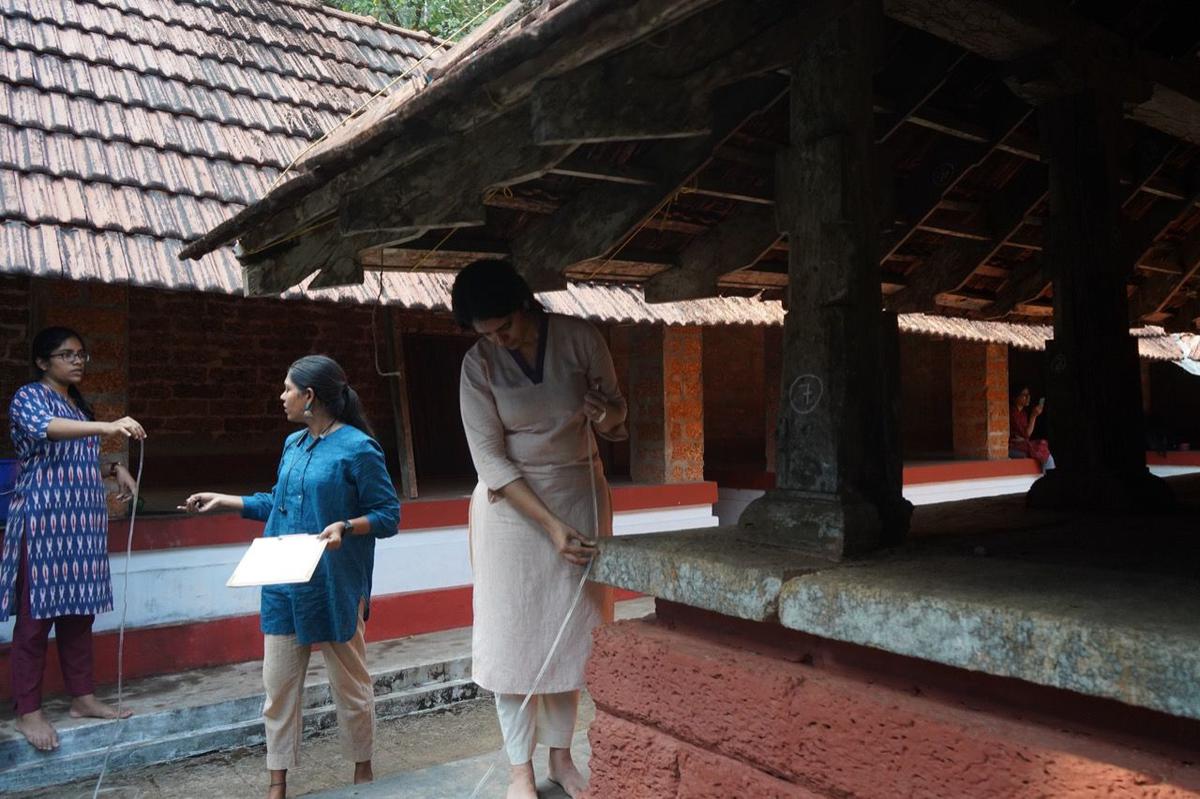
The architects at work on the Karnikara mandapam of Kunnamangalam Bhagawati Temple in Naduvannur in Kozhikode district.
| Photo Credit:
Special arrangement
However, they did not expect it to be in such a state of disrepair. “The 16 teak pillars were crumbling due to termites and the roof would have caved in the next rain. As the wooden base was also eaten up, the pillars were hollowed. A beam holding its pillars and the roof had deteriorated,” recalls Swathy, adding, “The wooden pillars and rafters had to be replaced without altering the ancient building, and respecting the beliefs of local residents.”
The structure had a laterite plinth and a mud floor as Kalamezhuthu, a ritual, was held there. During the ritual of Kalamezhuthu, a ritualistic artwork representing deities is drawn on the floor with coloured powders made from natural ingredients.
More than a place of worship, this was the oldest structure in the neighbourhood. About 300 to 400 years old, the temple has an intrinsic connection with the locality.
“The local lore is that Bhadrakali, the fierce mother goddess, who is the main deity in the temple, is the guardian of the 18 hills and streams in the vicinity. As a result, the environment has not been vandalised in any way,” explains Sruthin. One of the places in the neighbourhood used to be called ‘Ammanookum chaalil’ (the stream that is watched by the Mother), which has been colloquialised to Ammukanchaal, a delightful place crisscrossed with streams and rivulets. “Thanks to the belief, the people don’t mess with the water resources or the laterite hills in the area,” says Sruthin.
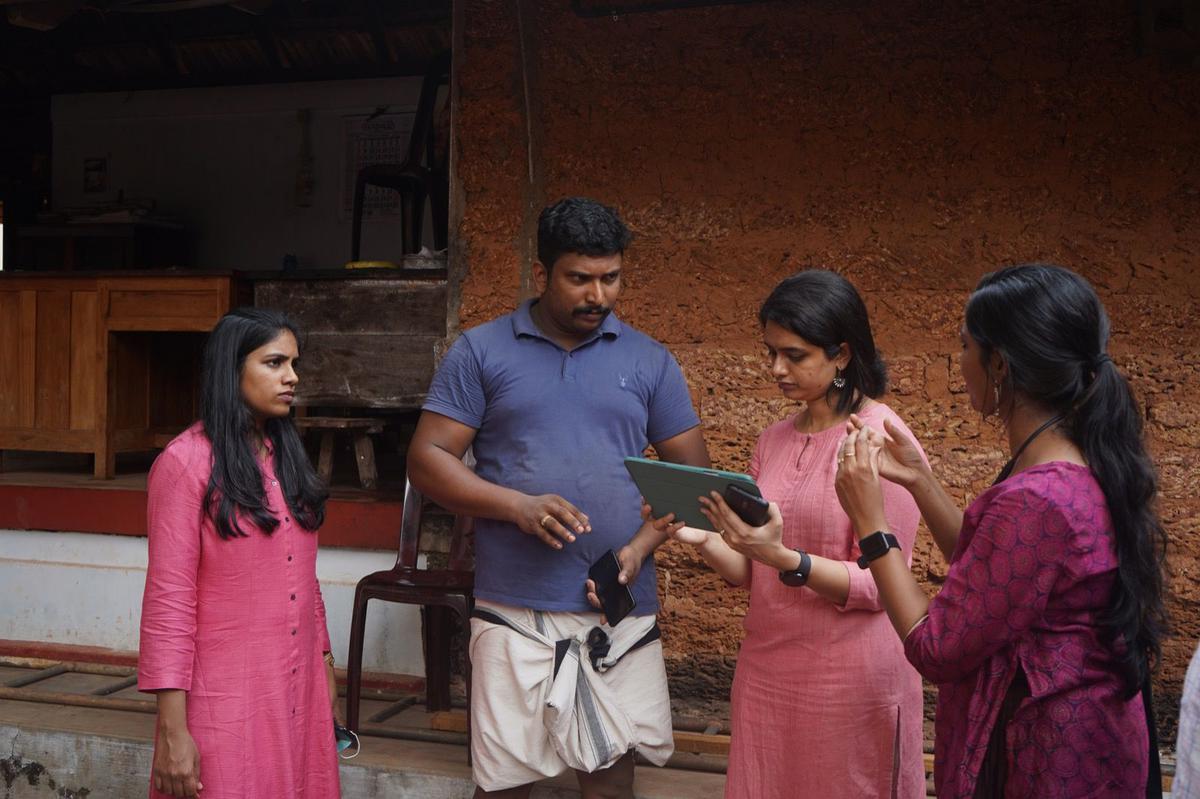
Architects Swathy Subramanian, Savita Rajan and Ritu Sara Thomas discussing the restoration of the Mandapam.
| Photo Credit:
Special arrangement
Stories of villagers who had fallen ill when they attempted to disturb the serene ambience of the surroundings ensured that the hills, greenery and streams were not polluted. In the nineties, residents in the locality had raised funds to conserve the Shri Kovil (the sanctum sanctorum), which was also on the verge of collapse.
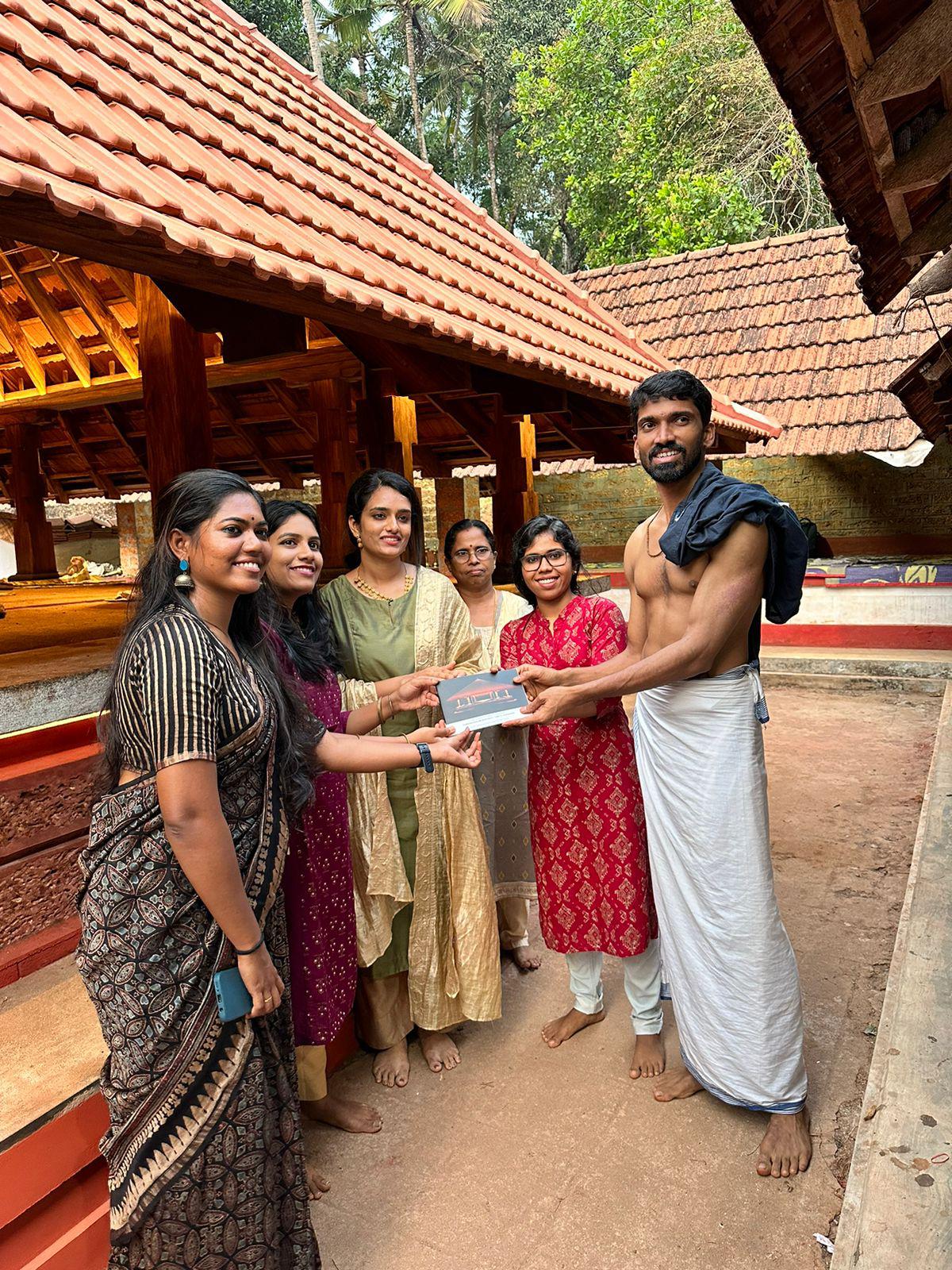
Shruthin Lal with the architects during a function in connection with the restoration of the Mandapam of Kunnamangalam Bhagawati Temple in Naduvannur.
| Photo Credit:
SPECIAL ARRANGEMENT
Worried by the state of the mandapam, Sruthin circulated its photographs in his family circles in 2022 to see if any kind of initiative would be taken to conserve the heritage structure However, nothing came of it. Around that time, Sruthin happened to meet Vivek Sahni, CEO and co-founder of Kama Ayurveda, an admirer of the work ARPO was doing.
“He had come to Guruvayur for a personal visit and I mentioned how heritage structures tucked away in villages were in dire need of funds for restoration and conservation. Enthralled by the story of the temple and the local belief system, he agreed to donate ₹11 lakh for the restoration of the mandapam,” says Sruthin.
Immediately, he informed the management of the temple of the offer. Sruthin emphasised that the restoration had to be done by conservation architects in a sustainable manner using traditional methods. Once that was agreed upon, Sruthin got in touch with Ezha.
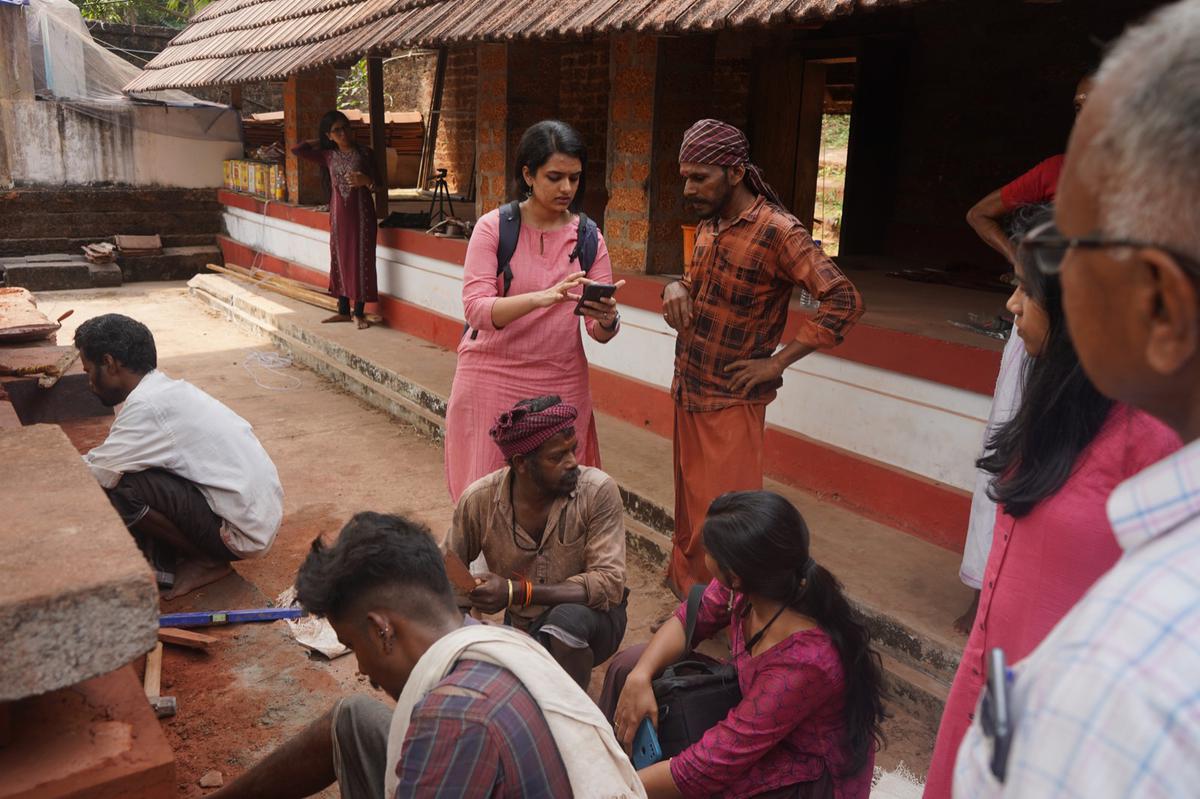
Work in progress of the reconstruction of the heritage Mandapam.
| Photo Credit:
Special arrangement
The committee managing the temple were also planning to renovate the Mandapam but some of them wanted to replace the timber pillars with concrete pillars and reinforce the roof in the same way. Sruthin and Swathi’s team convinced the committee to preserve the mandapam without demolishing or modifying the original structure.
“ARPO facilitated one-third of the total expense of the renovation. The only condition was that the whole restoration process should be done sustainably,” says Sruthin.
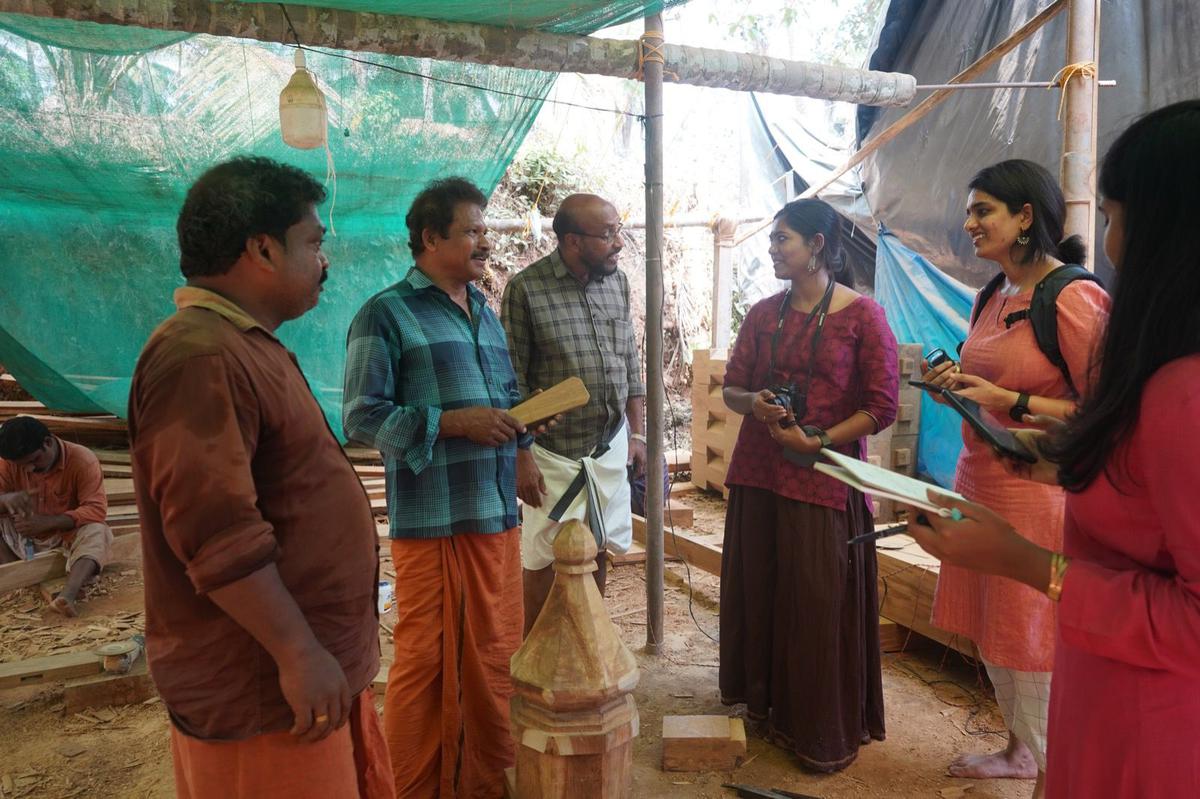
All conservation activities were carried out in consultation with local experts, residents and traditional craftsmen.
| Photo Credit:
Special arrangement
The architects explain that the problem in India is that most people do not understand what is the right kind of intervention for saving such heritage structures. “We convinced the committee members that, as much as possible, the Mandapam had to be restored with the same material, and in an authentic way by respecting the principles of architecture followed in the temple. They agreed and so we were all on the same page,” says Swathy.
The architects immediately got down to work. “The committee had already zeroed in on Chitresh, an expert in timber work for traditional buildings.
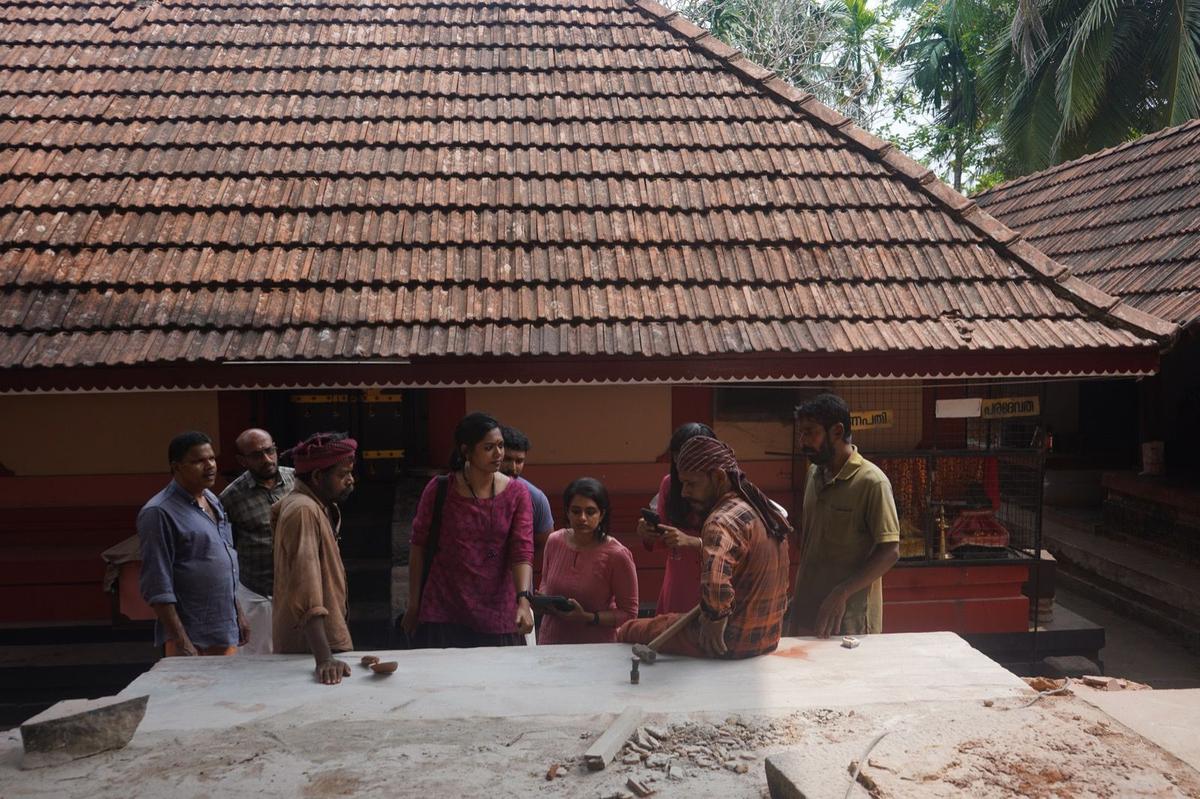
Restoration in progress at the temple.
| Photo Credit:
Special arrangement
Instead of teak, which was beyond their budget, they chose venga, a hard wood that has almost the same properties as teak to replace the rotting pillars and roof. In the place of paint or varnish, they used an aromatic concoction made by Purushu Vaidhyan, a local Ayurveda physician well-versed in treatment of trees also.
Vaidhyan says that it is a recipe handed down to him by his forefathers, which involves using five different kinds of oils and herbs. It not only protects the timber but also gives it a natural sheen and colour.
What enthuses the architects is that they were able to engage with local craftsmen during many stages of the restoration on account of the use of lime made from clam shells, and of laterite bricks and timber.
“These are dying arts and we are glad we were able to do our bit to keep them going. That is one of the reasons why we were able to impress the jury of the UNESCO award. Moreover, we extensively documented the structure before we began our work and also recorded every stage of the restoration. We succeeded in preserving its cultural identity with the community,” says Swathy.
The architects worked hand in hand with residents and artisans without stepping on the toes of believers. The local experts and artisans helped in ensuring that the entire process was chemical-free and sustainable.
“Thanks to the help of the community who came forward to us, we were able to meet the deadine. They took care of our food, cleaning of the premises and lots of other supplementary work,” recalls Swathy.
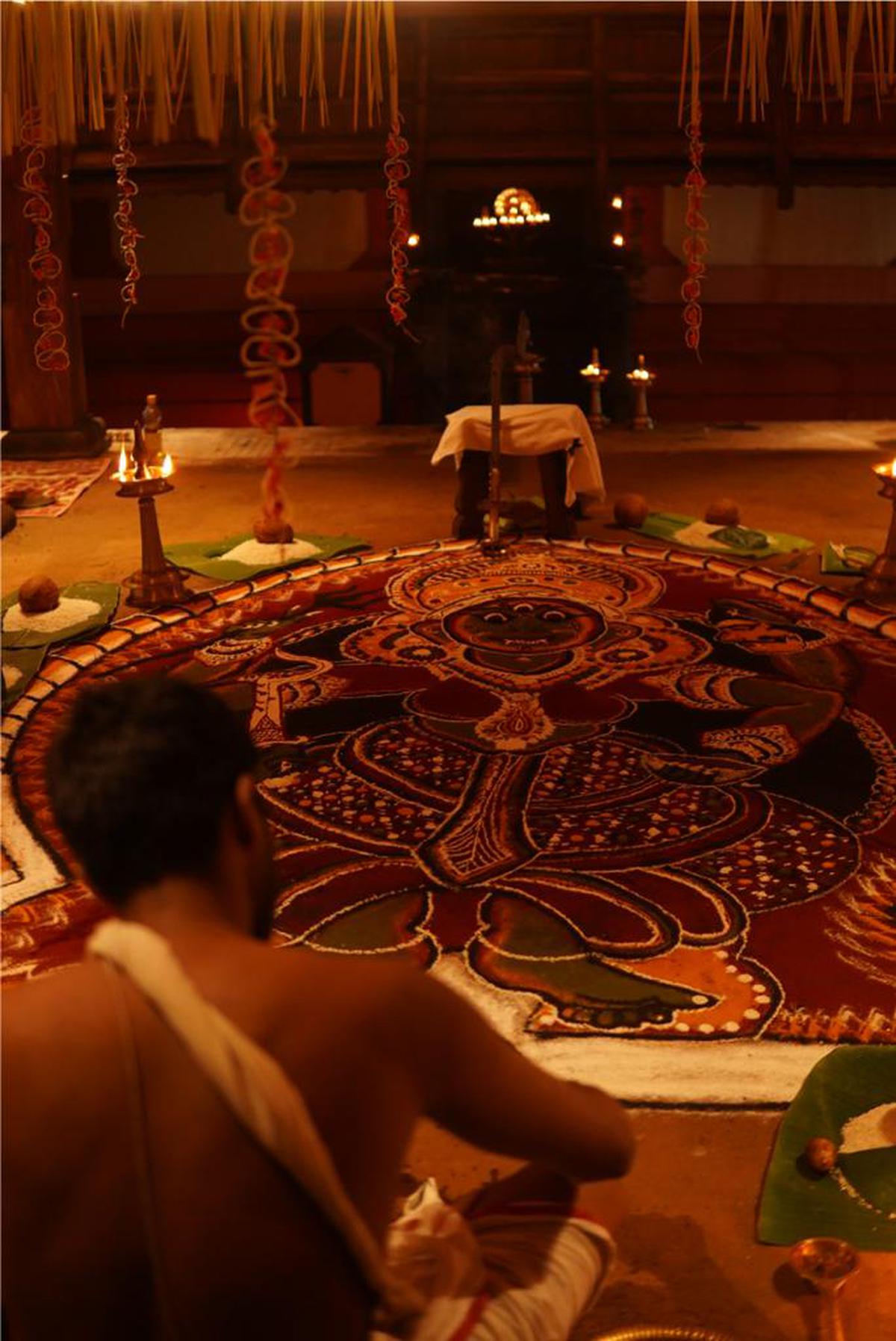
Kalamezhuthu at the restored Mandapam of Kunnamangalam Bhagawati Temple in Naduvannur.
| Photo Credit:
SPECIAL ARRANGEMENT
Come March 2023, the Mandapam was the venue for Kalamezhuthu and Kolamvettu, a rare ritual that stages the killing of a demon Darika by Bhadrakali.
“The story is enacted with people of a certain community acting as Kali and Darikan. It is held in the wee hours of the day and can be mesmerising,” says Sruthin.
“The restored sanctuary establishes an admirable grassroots model for transmitting the cultural legacy of Karnikara mandapam and other living religious sites across India and beyond,” reads the citation of the UNESCO award.
The award noted the efforts taken to conserve the living and architectural heritage of the Mandapam and the traditional expertise roped in to complete the project. Sruthin says the UNESCO award validates the work of conservation architects and might motivate more people to come forward to restore heritage structures in the right way.
For the three women, the restoration and the award have reinforced their aim to conserve heritage structures without destroying or altering its aesthetics and building techniques.
Source | Powered by Yes Mom Hosting






